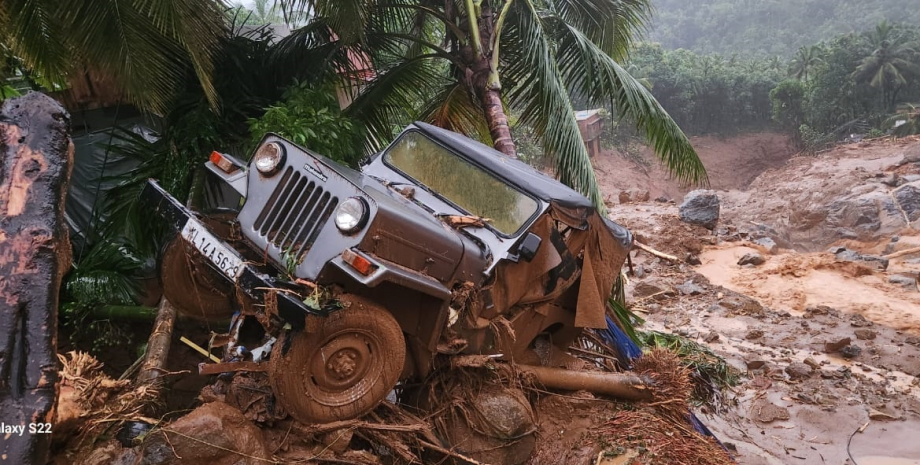
 By Victor Duda
By Victor Duda
And now scientists say that the situation is deteriorating due to a special type of storm known as "atmospheric river" or "flying river", which leads to a significant increase in humidity due to global warming. In India, through landslides and floods, the number of victims has already exceeded 300 people, more than 200 have disappeared. The BBC writes about it.
These storms, or "volatile rivers", are huge invisible ribbons of water vapor, which are born in the warm oceans during evaporation of seawater. Water vapor forms a strip or pillar at the bottom of the atmosphere, which moves from the tropics to cooler latitudes and falls in the form of rain or snow that is sufficiently destructive to cause floods, deadly avalanches or landslides. These "rivers in the sky" carry about 90% of all water vapor, which moves through the average latitudes of the Earth.
Scientists say that as the heating of the earth, these atmospheric rivers have become longer, wider and more intense, which is why hundreds of millions of people around the world are at risk of flooding. Meteorologists claim that in India, the warming of the Indian Ocean led to the emergence of "atmospheric rivers" that affect the monsoon rains between June and September.
The study, published in the Nature Scientific Journal of 2023, showed that from 1951 to 2020 in India, the Monsoon season, a total of 574 such storms occurred, and the frequency of such extreme weather phenomena increases over time. "Over the past two decades, almost 80% of the strongest atmospheric rivers have caused floods in India," the article reads.
A group of scientists at the Indian Technology Institute and the California University, which participated in the study, also found that the seven of the 10 most powerful floods in India in the seasons of monsoons in the period from 1985 to 2020 were connected with the atmospheric rivers.
The study states that the amount of evaporation from the Indian Ocean has increased significantly in recent decades, and the incidence of atmospheric rivers and the floods caused by them has increased recently as the climate is warmed. The average length of the atmospheric river is about 2000 km, the width is 500 km, and the depth is about 3 km, although they now become wider and longer, and the length of some of them exceeds 5000 km. And yet they are invisible to the human eye.
"They can be seen in infrared and microwave ranges. This is why satellite observations can be so useful for water vapor observation and atmospheric rivers around the world," says Brian Kan, a researcher at the atmosphere from NASA. Scientists associate atmospheric rivers with 56% of extreme precipitation (rainfall and snowfall) in South Asia, although there are few studies on this region. The atmospheric rivers were partially guilty of destructive floods in California.
However, not all "volatile rivers" are harmful, especially if they have low intensity. Some of them may be useful if they fall out in arid areas. However, this phenomenon is an important reminder of the rapidly heating atmosphere and contains much more moisture than in the past. We will remind, the landslides that have struck on the southern Indian state of Kerala earlier this week took the lives of more than 300 people.
About 200 people are still considered missing after the entire villages were covered with dirt and water on Tuesday. The rains before the shifts went for two days without interruption and continue. The catastrophe happened at 2 o'clock in the morning, when most people slept, and they had almost no chance of saving. About 9,000 people were forced to leave their homes and go to temporary refugee camps.










All rights reserved IN-Ukraine.info - 2022